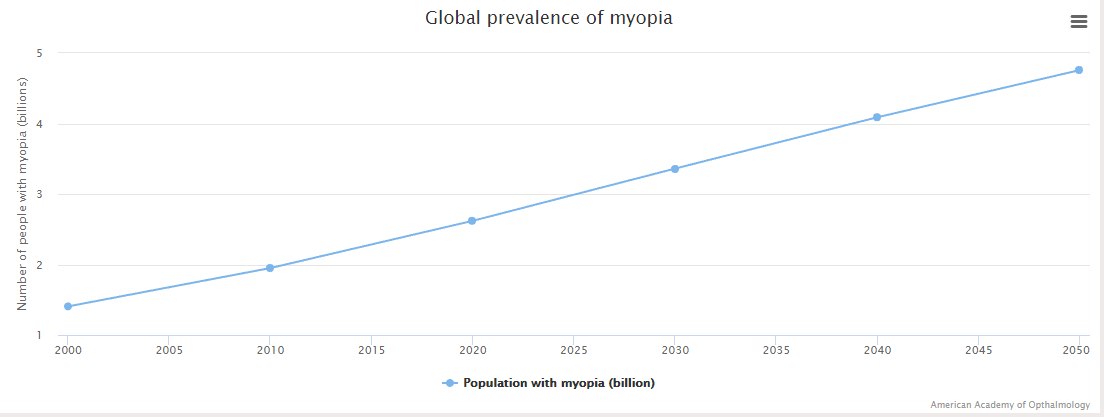2050 年,全球半数人口或将患近视

By 2050, nearly half of the world’s population — about 4.8 billion people — may develop myopia (近视), a dramatic rise from current levels. The problem is most severe in East Asia, South East Asia and Asia-Pacific, where by 2050 around two thirds of the population of these regions will be short-sighted. Not far behind will be North America, with 58.4%, Western Europe with 56.2% and Australasia with 55.1%.
While genetics influences myopia, lifestyle changes such as “the excessive use of near electronic devices” can accelerate the development of myopia. According to a study, many of the countries with the highest levels of smartphone ownership — such as South Korea and Australia — fall within the regions likely to have the highest levels of short-sightedness in the coming decades. However, while there’s a correlation between increased use of screens and increased prevalence (盛行) of myopia, it is unlikely that screens on their own are the problem.
The Ophthalmology study blames the increase in short-sightedness on “a combination of decreased time outdoors and increased near work activities”. However, studies have found that children who spend more time outdoors are less likely to suffer from myopia. Similarly, an Australian study which lasted for three years and involved more than 4,000 children in Sydney primary and secondary schools found that children who spent less time outside were at greater risk of developing myopia.
It is not yet known exactly why time spent outdoors is so important in preventing the condition. However, Ian Morgan of the Australian National University in Canberra has studied rates of short-sightedness across Asia and Australia, and claims it comes down to the way in which light (or lack of it) affects the development of the eyeball. Exposure to sunlight cuts myopia rates by encouraging the release of dopamine (多巴胺). Dopamine is known to inhibit eye growth and myopia is a condition caused by excessive eye growth.
原创编写 版权所有 侵权必究! 每日更新 个性化阅读 英语飙升!